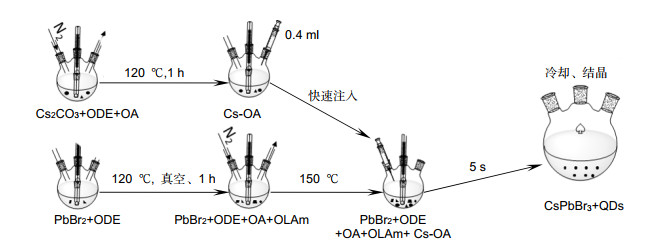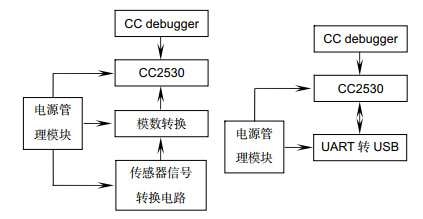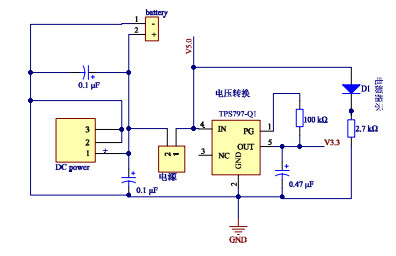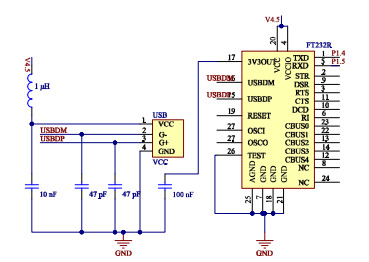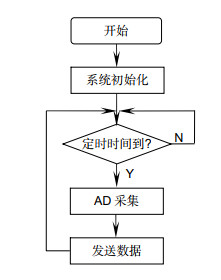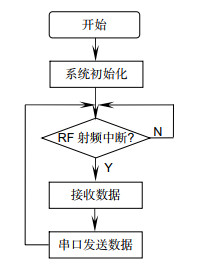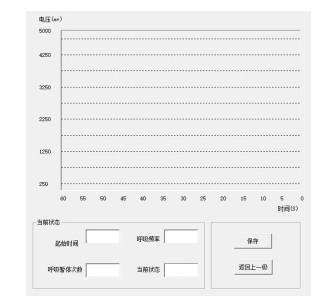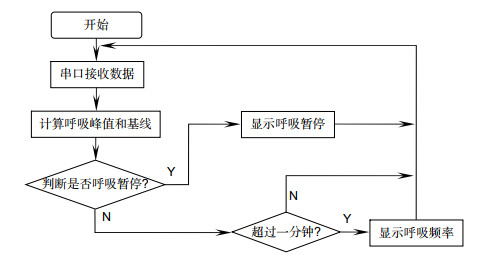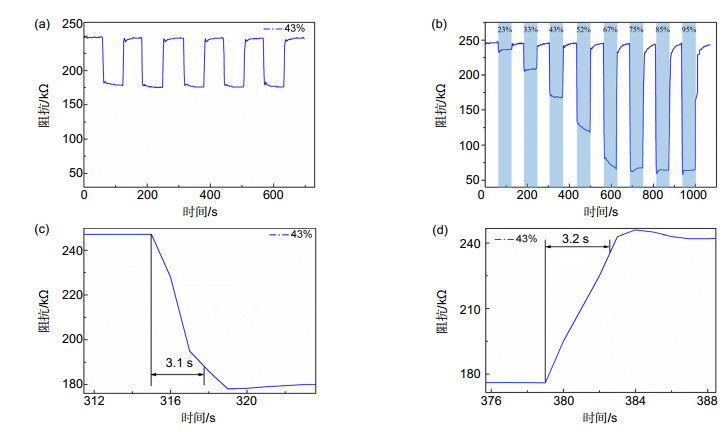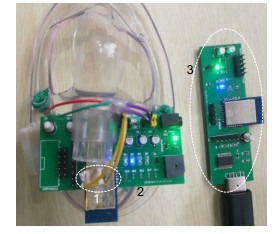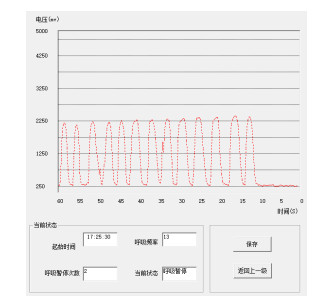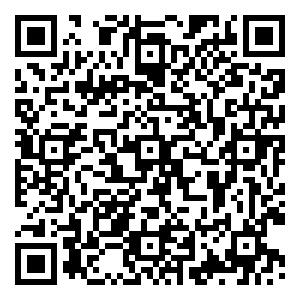Respiratory rate monitoring system based on inorganic halide perovskite humidity sensor
-
摘要
呼吸率检测中存在主观因素强、信号提取复杂、设备不易获取和有线连接不方便测试者移动等问题。人体呼吸周期为3 s~6 s,呼吸气流是呼吸动作的最直接反应,与周围空气存在湿度差。本文采用研制的新型无机卤化物钙钛矿湿度传感器测量呼吸率,克服了市面上湿度传感器响应和恢复时间长(10 s以上)的问题。系统使用Zigbee无线通信传输检测信号,使信号检测和处理部分分离,方便测试者移动。使用上位机软件进行数据处理计算呼吸率,并根据呼吸暂停阈值判断呼吸状态。测试结果表明,系统可实时准确监测呼吸率,最大误差1次/分钟,具有准确率高、信号处理简单、便携和成本低的优势。

Abstract
The traditional respiratory rate measurement technologies have several deficiencies, such as subjective appraised results, complicated signal extraction processes, difficult access to equipment, and inconvenience to move due to the wired connection setting. The respiratory airflow can directly reflect the human breath, and the respiratory frequency is usually 10~12 breaths/min (1 ventilation every 5~6 seconds). The humidity difference between exhalation and inhalation can be directly used to measure respiratory rate. In the present work, a wireless respiratory rate monitoring system based on inorganic halide perovskite humidity sensor was developed. The sensor exhibits an ultrasensitive humidity sensing performance, which overcomes the long response/recovery time (> 10 seconds) of the commercial humidity sensors. The system utilized a Zigbee wireless communication to transmit the measurement signal, which separates the signal detection and processing parts, making it easier for the tester to move. The upper computer software was designed and used for data processing to calculate the breathing rate. The system can accurately monitor the respiratory rate in real-time, recognize and alarm the apnea successfully by comparing with a setting threshold value. The test results show that the system can accurately monitor the breathing rate with a maximum error of 1 time per minute. The system possesses great potential for application in respiratory rate monitoring due to its high accuracy, simple operation, portability, and low cost.
-
Overview

Overview: Respiratory rate, as an important parameter of respiratory function, refers to the number of breaths per minute, and can provide important information related to health status. Continuously, accurately and stably monitoring respiratory rate is great significance for preventing respiratory diseases, cardiovascular diseases. It is simple and accurate to measure breathing rate by measuring the respiratory airflow. However, common airflow detecting methods, such as temperature sensors, piezoelectric sensors, and flow sensors, having weak output signals. There is 30% humidity difference between human exhaled gas with the outside world, humidity sensor can be used to measure the breathing signal. Human breathing frequency from 12 to 20 times per minute. The response and recovery time of the humidity sensors on the market range from ten seconds to tens of seconds, which cannot use to respiratory rate monitoring. When 30% humidity change occurs in the inorganic halide perovskite humidity sensor made in this paper, resistance will change significantly and recover within 3 seconds, which can be used to measure respiratory nasal airflow signals.
For the convenience of testers, this system uses Zigbee wireless network to transmit signals. The system is divided into four parts: sensor, data acquisition and sending node, receiving node, and host computer software. The data acquiring and sending node collects breathing signal converted by the humidity sensor and sends it to receiving node. Receiving node transmits received data to host computer software. The host computer software processes the received data, and compute respiratory rate through the algorithm. After processing, the relevant information is displayed on the interface for reference by medical staff. From the test data of five testers, it can be seen that under fast, slow, and normal breathing, the maximum error between the system test breathing rate and the tester's actual breathing rate is 1 per minute, and the system can accurately monitor the breathing rate.
This article designs and develops a respiratory rate monitoring system based on an inorganic halide perovskite humidity sensor, which can accurately measure the breathing process through respiratory airflow. It has a simple structure, a large output signal, a fast response speed, low energy consumption, and is easy to carry. The advantage is that the system's measured breathing results have high accuracy and good circulation stability. The system is expected to be applied in many scenarios such as daily respiratory rate measurement and monitoring of patient respiratory rate in hospitals.
-

-
表 1 呼吸率测试
Table 1. Respiratory rate testing
编号 呼吸率(次/分钟) 慢速 正常 快速 实际 测试 实际 测试 实际 测试 测试者1 7 6 17 17 28 28 测试者2 8 8 15 14 24 25 测试者3 11 11 18 18 26 26 测试者4 9 9 16 15 25 24 测试者5 8 7 16 16 24 24 -
参考文献
[1] Cretikos M A, Bellomo R, Hillman K, et al. Respiratory rate: the neglected vital sign[J]. Med J Aust, 2008, 188(11): 657-659. doi: 10.5694/j.1326-5377.2008.tb01825.x
[2] Allen J. Photoplethysmography and its application in clinical physiological measurement[J]. Physiol Meas, 2007, 28(3): R1-R39. doi: 10.1088/0967-3334/28/3/R01
[3] Hogan J. Why don't nurses monitor the respiratory rates of patients?[J]. Br J Nurs, 2006, 15(9): 489-492. doi: 10.12968/bjon.2006.15.9.21087
[4] 陈星池, 赵海, 毕远国, 等. 手机可见光提取脉搏中呼吸率的估计[J]. 东北大学学报(自然科学版), 2017, 38(7): 932-935. https://www.cnki.com.cn/Article/CJFDTOTAL-DBDX201707005.htm
Chen X C, Zhao H, Bi Y G, et al. Respiratory rate estimation from smartphone-camera-acquired pulse wave signal using visible light[J]. J Northeast Univ (Nat Sci), 2017, 38(7): 932-935. https://www.cnki.com.cn/Article/CJFDTOTAL-DBDX201707005.htm
[5] Pimentel M A F, Johnson A E W, Charlton P H, et al. Toward a robust estimation of respiratory rate from pulse oximeters[J]. IEEE Trans Biomed Eng, 2017, 64(8): 1914-1923. doi: 10.1109/TBME.2016.2613124
[6] 陈星池, 赵海, 李晗, 等. 近红外可穿戴设备中脉搏波的呼吸率检测[J]. 光学 精密工程, 2016, 24(6): 1297-1306. https://www.cnki.com.cn/Article/CJFDTOTAL-GXJM201606009.htm
Chen X C, Zhao H, Li H, et al. Detection of respiratory rate using pulse wave on near infrared wearable devices[J]. Opt Precision Eng, 2016, 24(6): 1297-1306. https://www.cnki.com.cn/Article/CJFDTOTAL-GXJM201606009.htm
[7] Charlton P H, Birrenkott D A, Bonnici T, et al. Breathing rate estimation from the electrocardiogram and photoplethysmogram: a review[J]. IEEE Rev Biomed Eng, 2018, 11: 2-20. doi: 10.1109/RBME.2017.2763681
[8] 储泰山, 陆美珠, 马志新. 基于床垫式生命监测仪的呼吸率检测[J]. 科技创新与应用, 2014(18): 5-6. https://www.cnki.com.cn/Article/CJFDTOTAL-CXYY201418005.htm
Chu T S, Lu M Z, Ma Z X. Respiratory rate measurement based on mattress life monitor[J]. Technol Innov Appl, 2014(18): 5-6. https://www.cnki.com.cn/Article/CJFDTOTAL-CXYY201418005.htm
[9] Turnbull H, Kasereka M C, Amirav I, et al. Development of a novel device for objective respiratory rate measurement in low-resource settings[J]. BMJ Innovat, 2018, 4(4): 185. doi: 10.1136/bmjinnov-2017-000267
[10] Lee P J. Clinical evaluation of a novel respiratory rate monitor[J]. J Clin Monit Comp, 2016, 30(2): 175-183. doi: 10.1007/s10877-015-9697-4
[11] 范大勇. 便携式呼吸监测系统设计方案的改进和算法研究[D]. 天津: 天津大学, 2018.
Fan D Y. Improved design and algorithm research of portable respiratory detection system[D]. Tianjin: Tianjin University, 2018.
[12] Zhen Z, Li Z C, Zhao X L, et al. Formation of uniform water microdroplets on wrinkled graphene for ultrafast humidity sensing[J]. Small, 2018, 14(15): 1703848. doi: 10.1002/smll.201703848
[13] Smith A D, Elgammal K, Niklaus F, et al. Resistive graphene humidity sensors with rapid and direct electrical readout[J]. Nanoscale, 2015, 7(45): 19099-19109. doi: 10.1039/C5NR06038A
[14] Atalay O, Kennon W R, Demirok E. Weft-knitted strain sensor for monitoring respiratory rate and its electro-mechanical modeling[J]. IEEE Sens J, 2015, 15(1): 110-122. doi: 10.1109/JSEN.2014.2339739
[15] Zheng Y L, Ding X R, Poon C C Y, et al. Unobtrusive sensing and wearable devices for health informatics[J]. IEEE Trans Biomed Eng, 2014, 61(5): 1538-1554. doi: 10.1109/TBME.2014.2309951
[16] Mogera U, Sagade A A, George S J, et al. Ultrafast response humidity sensor using supramolecular nanofibre and its application in monitoring breath humidity and flow[J]. Sci Rep, 2014, 4: 4103. http://www.nature.com/articles/srep04103
[17] Borini S, White R, Wei D, et al. Ultrafast graphene oxide humidity sensors[J]. ACS Nano, 2013, 7(12): 11166-11173. doi: 10.1021/nn404889b
[18] Adib F, Mao H Z, Kabelac Z E, et al. Smart homes that monitor breathing and heart rate[C]//Proceedings of the 33rd Annual ACM Conference on Human Factors in Computing Systems, South Korea, 2015: 837-846.
[19] Iber C, Ancoli-Israel S, Chesson A L, et al. The AASM Manual for the Scoring of Sleep and Associated Events: Rules, Terminology and Technical Specifications[M]. 2nd ed. Westchester, Ill, USA: American Academy of Sleep Medicine, 2012.
[20] Anichini C, Aliprandi A, Gali S M, et al. Ultrafast and highly sensitive chemically functionalized graphene oxide-based humidity sensors: harnessing device performances via the supramolecular approach[J]. ACS Appl Mater Interfaces, 2020, 12(39): 44017-44025. doi: 10.1021/acsami.0c11236
-
访问统计


 E-mail Alert
E-mail Alert RSS
RSS

 下载:
下载:
